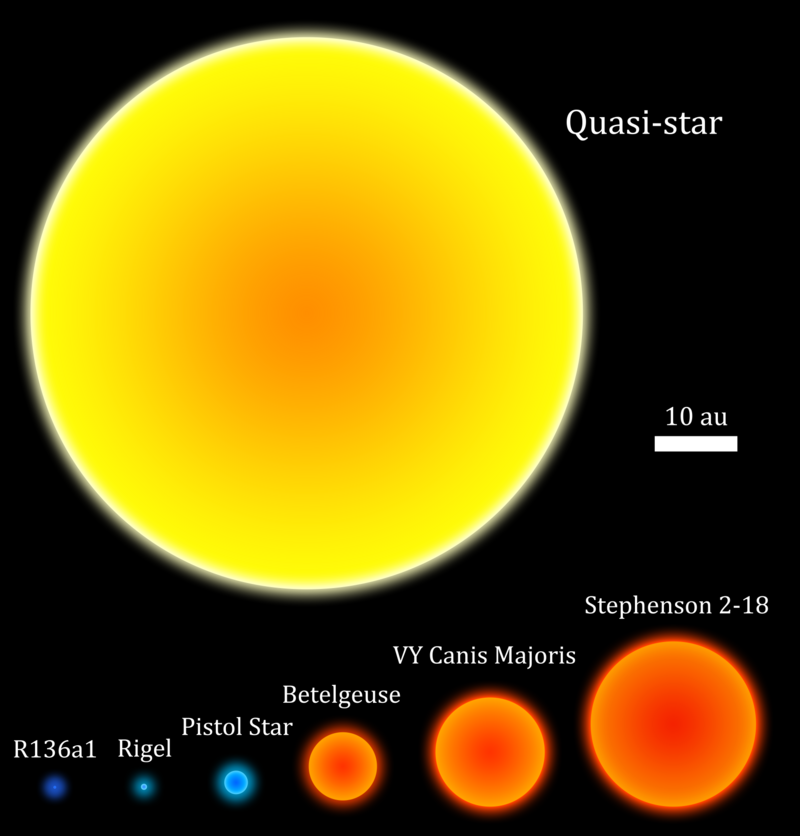The little red dots in the early universe could be 'quasi-stars'.
Calculations show a quasi-star could form when a gas cloud over 1,000 times the Sun's mass collapses and forms a black hole. Its outer layers would be big enough to absorb the resulting supernova without being blown apart! Then you'd get a huge star powered not by fusion but by gravity, with a black hole in its center.
Such a star could be as luminous as a small present-day galaxy! And that's what little red dots are like.
As a quasi-star ages, it should cool down, and eventually the gas on the outside would dissipate, leaving behind a black hole. Such 'intermediate-mass black holes' could be the ancestors of the supermassive black holes we now see in most galaxies. This would solve a mystery: we don't know how such big black holes arose.
Pro tip:
Don't embarrass yourself by mixing up a quasi-star with a Thorne–Żytkow object! That's when a neutron star falls into an ordinary large star. We may have seen one of those in the Small Magellanic Cloud, a small galaxy orbiting the Milky Way.
Quasi-star: https://en.wikipedia.org/wiki/Quasi-star
Thorne–Żytkow object: https://en.wikipedia.org/wiki/Thorne%E2%80%93%C5%BBytkow_object
